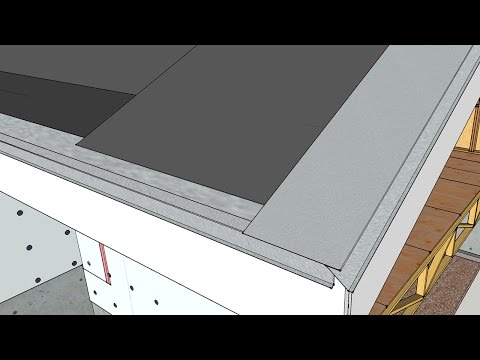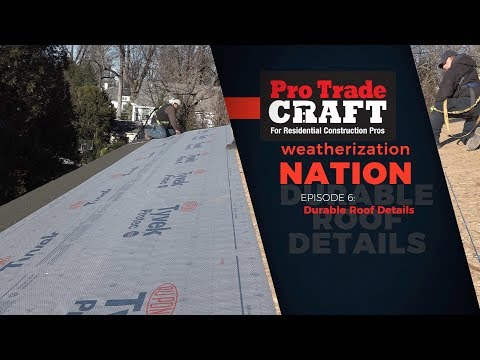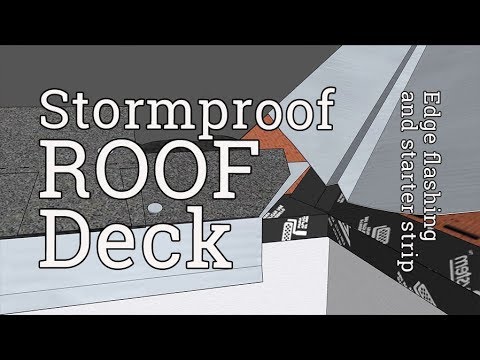Tape layers should overlap shingle-style up the roof
In the first few parts of this series, we figured out where to snap that first line, how to work efficiently as a team, and how to measure the tricky hip pieces. Now that the roof is decked, we’re going to seal it against windblown rain and hurricanes.
Step by step
- We’ll begin at the bottom with a six-inch roll of flashing tape and fold it over the subfascia.
- Next, run tape up the rake and fold the edge over it, too.
- Valleys are taped next with two overlapping pieces of six-inch tape.
- Julio seals the bottom edge of the roof deck, like in animation land. Because this shotgun-style home in New Orleans has no overhangs, the roof tape is sealed to the weather barrier on the wall.
Ice dams need extra protection
In places prone to ice dams, the building code requires enough peel and stick membrane to reach two feet inside from the outside face of the wall. This usually means more than one strip of membrane. With his paper-puller on the ground, Rick places membrane along the eave, working his way into the valley.
Being careful not to tear the paper or wrinkle the sheet. Now, he folds the edge over the fascia.
The sequence for subsequent tape strips
- Next, do any roof to wall joints. You can start at the bottom or the top, it doesn’t matter, but you should use a roll of six-inch tape.
- They fold the tape into the seam and then pull the folded paper back, which neatly places the tape over the joint. The top pieces overlap and fold over.
- Chimneys are flashed in the same order as always, bottom first, cut and folded around the corner, then the sides are applied and folded around the upper and lower corners, and then the top.
- The tape is rolled into place with a J roller.
- Now they can tape the field with three-inch tape. First are the vertical seams between sheets in the first course.
- Next is the lowest seam that is continuous between the first and second row of decking.
- The second row of vertical seams is next, and so on. The tape should overlap shingle-style up the roof.
- Seal the hips and the ridge with six-inch tape.
Finally, make sure the tape is pressure applied with the J roller.











